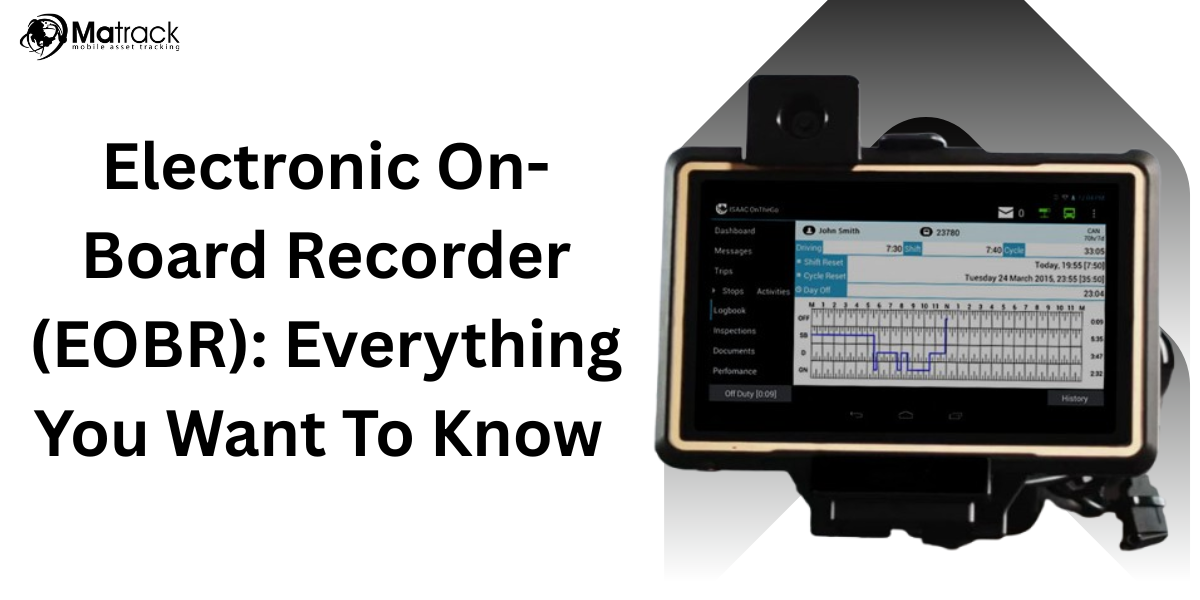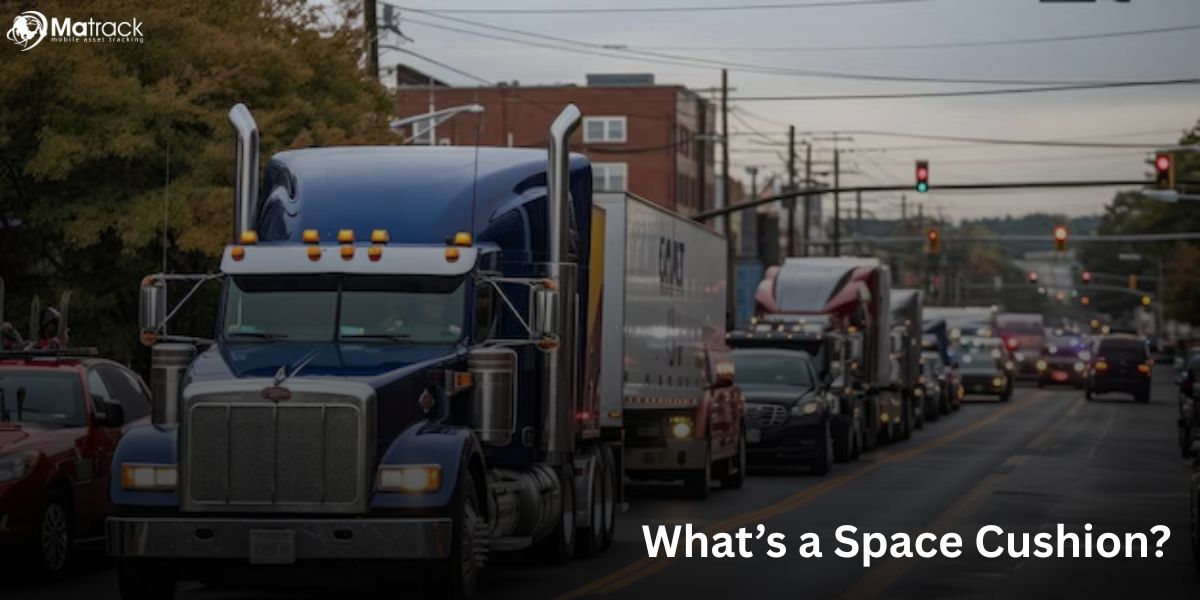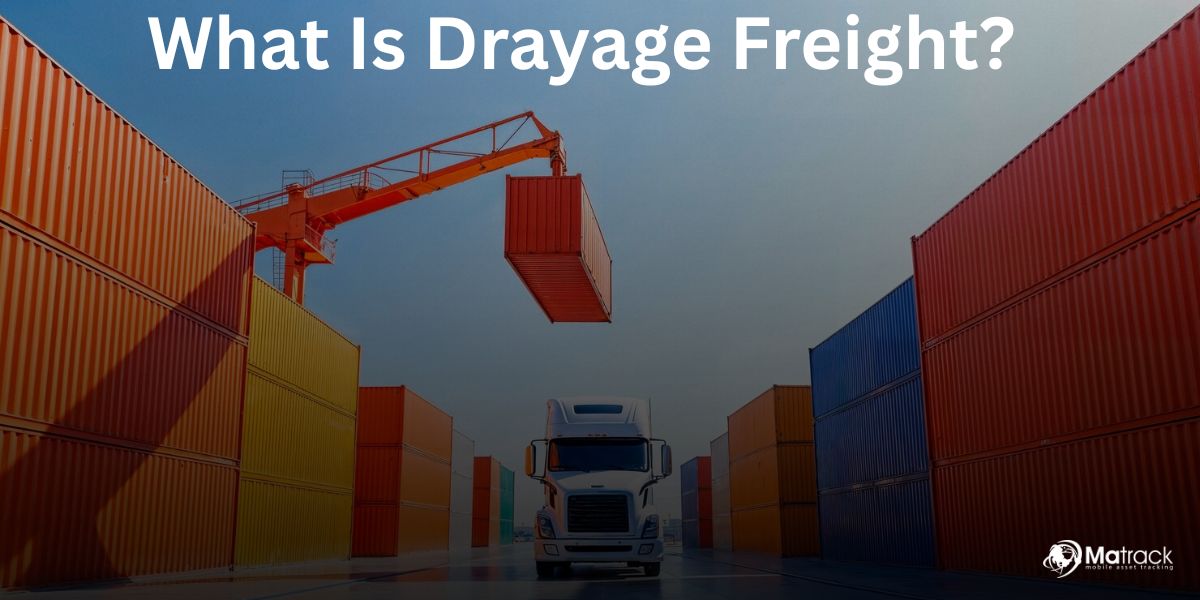Key Takeaways:
- An EOBR is a device that records driving hours, engine activity, and location automatically inside commercial vehicles.
- EOBRs improve road safety, help follow HOS rules, and replace paper logs with accurate digital records.
- The ELD mandate replaced EOBRs in 2015, requiring all tracking devices to meet strict federal standards.
- AOBRDs, EOBRs, and ELDs differ by regulation, accuracy, edit tracking, and inspection readiness.
What is an Electronic On-Board Recorder (EOBR)?
An Electronic On-Board Recorder (EOBR) is a device that goes inside a truck or bus to automatically keep track of how long the driver has been on the road. It logs driving hours, engine activity, vehicle movement, and location.
EOBRs help drivers and companies follow the rules about how long someone can drive without rest. Instead of writing everything down by hand, the EOBR does it for them.
The device connects to the vehicle’s engine and uses sensors to collect data in real time. It saves this information so it can be checked later by the company or during a roadside inspection. This helps keep roads safer and ensures everyone follows the same rules.
Why is an EOBR important?
An EOBR is important because it helps keep drivers safe, makes sure they follow the rules, and helps companies stay organized.
It tracks how long a driver is behind the wheel, which helps prevent accidents caused by fatigue. It creates a clear and honest record of driving hours of service (HOS) so there’s no need for handwritten logs or guesswork.
For trucking companies, it makes it easier to check how their drivers are performing, when trucks need maintenance, and where they can save time and fuel.
In the United States, most commercial vehicles are required to use an EOBR or an approved ELD system. If they don’t, they can face fines or even be taken off the road during inspections.
How the ELD Mandate Affects EOBRs
EOBRs have been used since the early 2000s to replace paper logs and track driver hours electronically. At first, they were optional and only used by some carriers.
In 2015, the Federal Motor Carrier Safety Administration (FMCSA) introduced the ELD mandate, which replaced EOBRs with a new standard called Electronic Logging Devices (ELDs). These devices had to follow strict rules for accuracy, security, and ease of inspection.
The FMCSA gave companies time to adjust. Fleets using paper logs had to switch by December 18, 2017. Fleets already using EOBRs had until December 16, 2019 to upgrade to ELD-compliant systems.
Since then, only ELDs that meet FMCSA requirements are allowed. Older EOBRs and other logging systems no longer qualify.
Difference Between AOBRDs, EOBR, and ELDs
| Feature | AOBRD (Automatic On-Board Recording Device) | EOBR (Electronic On-Board Recorder) | ELD (Electronic Logging Device) |
| Definition | Older electronic device for tracking HOS | Predecessor to ELDs with limited regulations | Current FMCSA-compliant logging system |
| FMCSA Compliance | Partially compliant (grandfathered until Dec 2019) | Not fully regulated; phased out with ELD rule | Fully compliant with FMCSA’s ELD mandate |
| Regulation Year Introduced | 1988 (FMCSA guidelines) | 2007 proposal (not mandatory for all carriers) | 2015 ELD Mandate (Final Rule) |
| Data Source | Connects to engine, basic driving data | Connects to engine, logs HOS electronically | Fully syncs with engine ECM for automated log capture |
| Editing Logs | Driver and carrier can edit without annotations | Driver/carrier can edit; no audit trail required | Edits must include annotations; all changes are tracked |
| Display Requirements | No specific screen requirements | Basic in-cab display | Must display current driving status and logs clearly |
| GPS & Location Tracking | Not always required | Often included, but not regulated | Required every 60 minutes and at each duty status change |
| Data Transfer | Manual or limited transfer methods | May include USB or wireless transfers | Must support telematics (wireless) or local (USB/Bluetooth) |
| Tamper Resistance | Low to moderate | Moderate | High – designed to prevent unauthorized changes |
| Inspection Readiness | Slower, less standardized | Better than paper logs, but not uniform | Fast, standardized format for roadside inspections |
| Deadline to Phase Out | December 16, 2019 | December 16, 2019 | Currently required by law |
Read More: AOBRD vs. ELD: What’s the difference?



